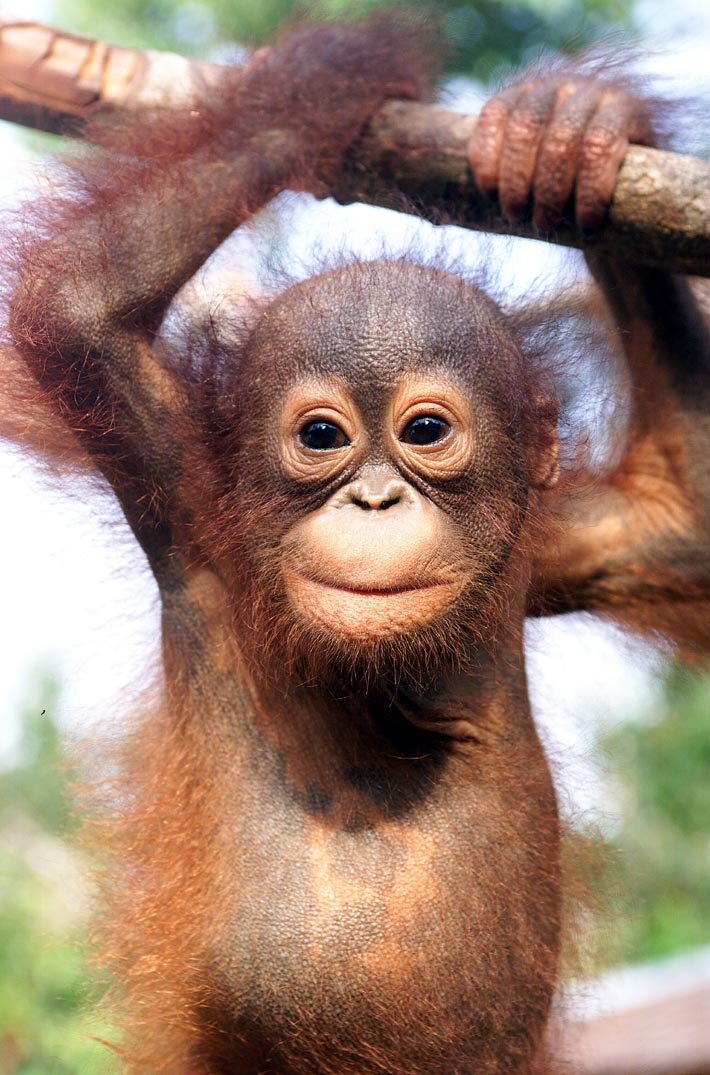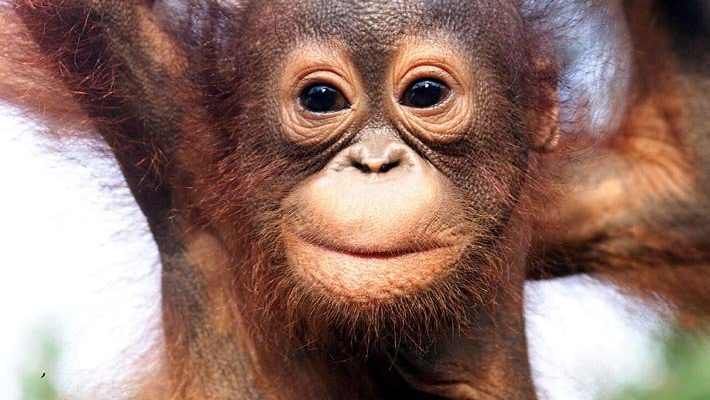
Bornean orangutans have developed some remarkable survival strategies that might remind you of how we adapt to new situations in our own lives. Think of it like living in a big city with all its chaos, yet knowing how to find your way to the best coffee shop or a quiet park. This article will unpack the fascinating ways these animals navigate their challenging habitats, from their diet to their social structures, and even their cunning use of tools.
Understanding Bornean Orangutans’ Habitat
To appreciate how Bornean orangutans survive, it’s essential first to understand their habitat. The rainforests of Borneo are dense and lush, but they can also be challenging. With towering trees and thick underbrush, food sources aren’t always available, and movement can be tough.
These orangutans primarily live in lowland rainforests, which provide a variety of fruits, leaves, and insects. However, deforestation and climate change are threatening these vital habitats. You might be wondering why this matters. Well, without a healthy ecosystem, orangutans struggle to find food and shelter, which directly impacts their survival.
In addition to food challenges, the forest environment can also pose dangers. Natural disasters like floods or strong winds can destroy their homes. Bornean orangutans have adapted by nesting in high trees, using their strong arms to build secure resting spots far from ground-based predators.
Their Diet: A Delicate Balance
When it comes to their diet, Bornean orangutans are primarily frugivorous, meaning they eat a lot of fruit. Imagine being a picky eater, but instead of choosing between pizza or pasta, you’re deciding which juicy fruit you want for breakfast. For orangutans, this involves a variety of fruits like jackfruit, durian, and figs. Their extensive diet is essential because it helps them meet their energy needs in a harsh environment.
However, finding food isn’t always easy. These orangutans have adapted a clever approach to ensure they’re never too far from a meal. They are known to travel long distances in search of fruit trees, sometimes even mapping out their routes through the forest. This ability to remember locations is crucial, especially in areas where seasonal changes affect fruit availability.
You might find it interesting that young orangutans learn about food sources through observation. They watch their mothers and other adults to see which fruits are safe to eat and how to open tough shells to get to the tasty bits inside. It’s like picking up cooking tips from a chef!
Social Structures and Survival
Bornean orangutans are relatively solitary compared to other primates. However, they do have complex social structures that play a significant role in their survival. Males tend to roam alone, while females often stay with their young, forming small family units.
This social setup has its advantages. Female orangutans can protect their young from potential threats while teaching them survival skills like finding food and building nests. You might be surprised to learn that mothers can even share food with their young, emphasizing strong familial bonds.
Their social interactions aren’t just for food sharing or protection; they also help sustain genetic diversity within populations. When males move around to mate with different females, it leads to a healthier gene pool. This is vital for the survival of the species as a whole, especially in an environment that is constantly changing due to external pressures.
Adaptations to Climate Challenges
Borneo’s weather can be unpredictable, with heavy rains and high humidity levels. Bornean orangutans have developed several adaptations to cope with these climate challenges. For example, their long arms and strong grip help them navigate wet branches and leap between trees with ease, even in stormy weather.
Nesting high up in the trees also offers them protection from heavy rain and predators alike. Their nests are made from leaves and branches, crafted carefully to ensure they remain safe and dry. Imagine curling up in a cozy blanket on a rainy day; that’s the kind of comfort they seek in their nests.
The orangutans’ thick, reddish fur also plays a role in their survival. It helps to insulate them against the cold during rainstorms while keeping them cool in the hot tropical sun. This dual-functioning fur is a testament to their evolution in a challenging environment.
Utilizing Tools for Everyday Needs
Orangutans are one of the few non-human animals known to use tools, and this ability significantly enhances their survival. They’ve been observed using sticks to extract termites, leaves to catch rainwater, or even stones to crack open hard shells. This resourcefulness is akin to how humans might use a Swiss Army knife to tackle various tasks—all in a day’s work!
Tool use also reveals the intelligence of Bornean orangutans. They can not only use tools but also modify them to suit their needs. For instance, they might strip a twig of its leaves to make it more effective at retrieving insects. This form of problem-solving is not just impressive; it’s a crucial skill in their daily survival.
By passing this knowledge down from generation to generation, young orangutans learn how to adapt to their environment better. It’s like having a mentor guiding you through life’s challenges—this learned behavior helps ensure their species thrives.
The Impact of Habitat Loss
Unfortunately, Bornean orangutans face significant threats due to habitat loss. Deforestation for palm oil plantations, logging, and agriculture has devastated their living spaces. You might find it heartbreaking to know that every day, they lose more of their forest home, making survival increasingly difficult.
As their habitat shrinks, orangutans are forced to venture farther from their nests in search of food, leading to increased conflict with humans. This situation can be dangerous for both the orangutans and local communities. The diminishing forest also means fewer fruit trees, putting pressure on their already limited food sources.
Conservation efforts are crucial to protect these majestic creatures and their environment. Initiatives like reforestation and sustainable agriculture can help restore their habitat. Supporting these efforts is essential for ensuring that Bornean orangutans can continue to thrive in their unique and challenging world.
The Road Ahead: Conservation and Hope
Despite the challenges, there is hope for Bornean orangutans. Conservation groups are working tirelessly to protect their habitat and raise awareness about their plight. Education plays a significant role in changing attitudes toward these stunning creatures and their environment.
By promoting sustainable practices, we can help ensure that orangutans have a future in the wild. You might often hear about the phrase “think globally, act locally.” This applies here—supporting local conservation efforts or choosing sustainable products can make a difference.
Ultimately, the survival of Bornean orangutans relies on our collective actions. If we can create a more sustainable future, we can help secure a safe environment for these fascinating creatures and ensure that they continue to thrive amidst the challenges.
In summary, Bornean orangutans are remarkable survivors who have adapted to their harsh environment in various ways. From their unique diets and social structures to their impressive problem-solving skills, every aspect of their lives reflects their remarkable ability to thrive. Understanding their world helps us appreciate the importance of protecting it for future generations.

